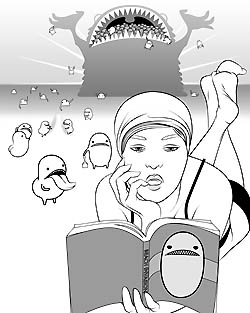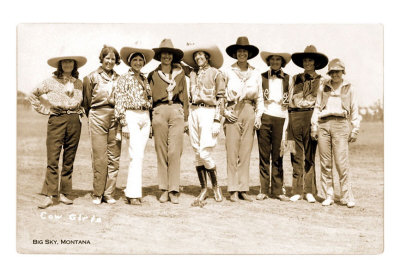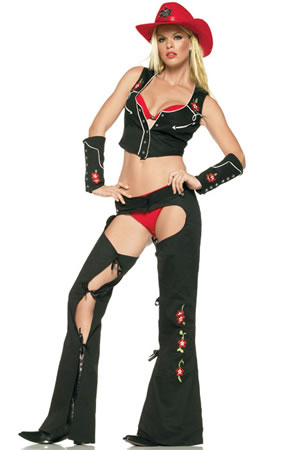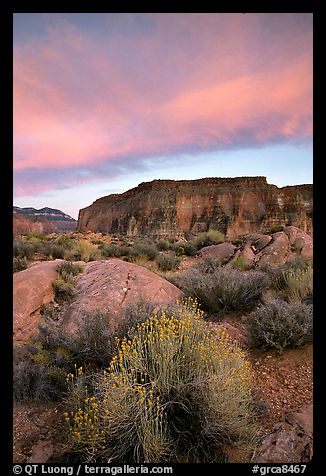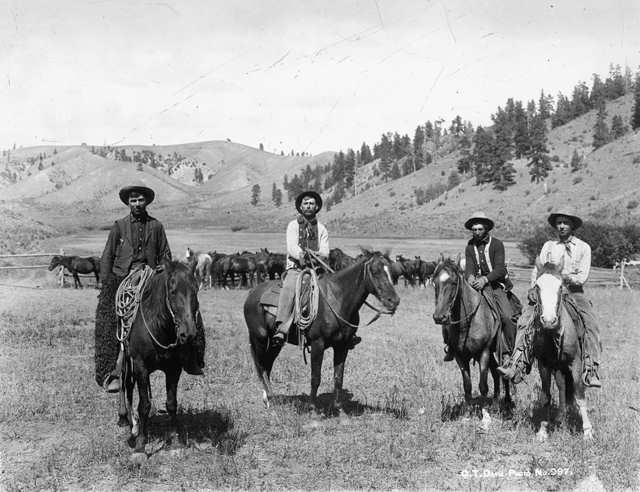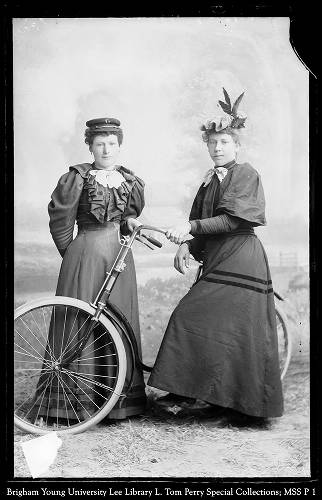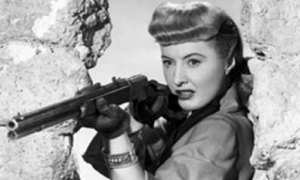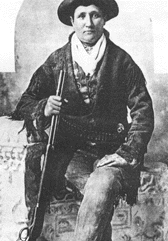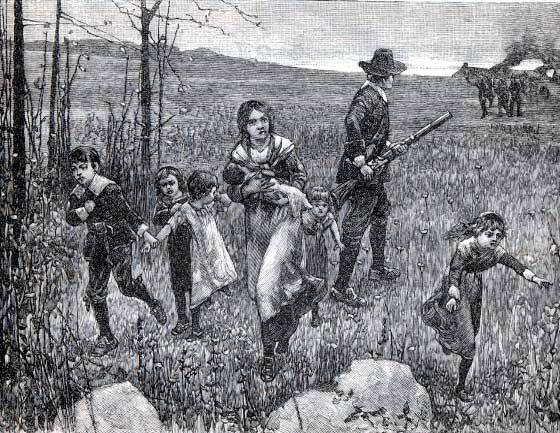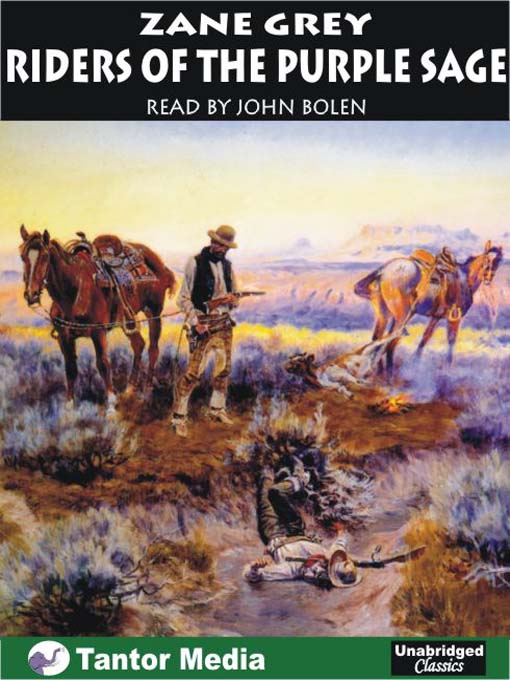|
Irvine Valley College: Online Literature Study of the School of Humanities and Languages Literature 110 - Popular Literature Spring 2013 - Ticket #62740 // Marjorie Coverley Luesebrink, MFA, Instructor
Unit 6grey: Cowboy Jamboree Showdown at Yellow Butte, Louis L'Amour
Zane Grey and his Purple Western Frontier When we begin to read Grey's novel, we see many of the Western Genre elements that we recognize from TV shows and movies (both new and old). Yet, this is primarily a "captivity" narrative - a form definitely borrowed from the earlier Eastern frontier stories! However, Grey's approach is radically different in that it places "The Mormons" in the role of both kidnappers and criminals [no "wild Indians," no "wild Outlaws"]! While this particular feature of the story fixes it in a specific historic and social niche, it makes a good example for us to study. Because, today, we would scarcely rise to the bait of demonizing the Mormons, the story becomes a more neutral canvas of "role" playing for us to examine.
Cowgirls? Or Coooowgirl? Just a reminder of what modern cultural media has done to the Cowgirl image!
Many scholars that we have read in earlier lectures have pointed out the ways in which Popular Literature embraces the concerns and fears of an era. We saw this with Mary Shelley's *Frankenstein* [the concerns about science and life] and also with Marie Lowndes' *The Lodger* [the fear of anonymous criminals in bigger cities]. Zane Grey's innovations - his transformation of the frontier narrative into the Western Novel Genre, while it seems so particularized with its cowboys and Indians and western locale, can be seen to come, as well, from two main concerns of the early 20th Century. One is the loss of the Frontier altogether and what that might mean for the American imagination. The other can be seen as a heightened sense of conflict about community, family, and sexual roles in an increasingly urban and industrial society. My copy of *Riders* has an excellent introduction by Lee Clark Mitchell of Princeton University. [See his book - *Westerns: Making the Man in Fiction and Film*, 1998] I am going to quote from that Introduction here - The Loss of the Frontier: The Landscape Itself - Grey deliberately invokes a specific historical time and space, the unhistoricized that it could be almost anywhere in the West in the By eliminating actual history from the Landscape details, Grey is able to diffuse the idea of the Frontier into a generalized West. And, Since the Frontier, in earlier narratives was always a place of Transformation, Grey employs motif of self-realization as part of this ambivalence about the West: Self-transformation in itself is hardly a
process to be disparaged-- Yet in apparent opposition to its own
plot exertions, the novel itself
Surprise Valley
A powerful irony is none the less concealed in this
stock fictional
So, the landscape of the novel gives us both sublime inspiration and freedom and the possibility (ambiguous) of transformation. But! But! Look carefully when you come to the end! Jane and Lassiter have entered Surprise Valley - and Jane begs Lassiter to roll the rock down into Deception Pass. And [notably with his hand bleeding, a stigmata of sorts], he does! Surprise Valley is a box canyon, and we can only believe, within the confines of the novel, that they are sealed in there forever! In fact, the last word of the text is "forever." This might not be quite the kind of unending "west" that we had hoped for - in fact, we could read it as a foreshadowing of the end of the frontier - the last escape to the west [Venters and Bess have gone East] is a closed canyon. We can surely discuss this on the Boards!
The Captivity Narrative: One of the standard ploys invoked by many of Grey's novels is to at last the abduction of her own adopted
daughter, Fay. The novel At the same time, the second captivity
plot emerges, involving the In short, the novel organizes materials
according to a conventional
Oh! My Stars! Women Riding Bicycles. Shocking! We have many clues about the relationship between this captivity narrative and the conflicts that were just beginning to be felt in the 20th Century about community, women, and family. The era in which Grey wrote was one in which the US saw unprecedented urban unrest, growing numbers of women in prostitution (seen in *The Lodger,* as well), disparity of wealth, and rampant industrial development. Along with those changes came a deep distrust of new social and sexual roles. Women, now entering the workplace in great numbers, were seen to be particularly at risk. People worried a great deal about "white slavery," "working girls," "career women," and "the problem of the New Woman." We can see some of this in the complicated weaving of what are really three captivity narratives in the novel. For example, although they are under "Mormon" control, both Jane and Bess are seen wearing men's clothing the first time we see them. And, finally, both Jane and Bess are "rescued" and transformed - but the question remains to what extent they are liberated. They are certainly transformed into "real women" - but they were women (biological) in the first place. At the end of the book, each of these women has been "liberated" from captors and oppressors - and that seems to entail that they have now become proper wives and dutiful consorts. Despite the seeming objective of freeing these women, it is hard to tell whether *Riders* supports or subverts a forward-looking version of female sexuality.
Barbara Stanwyck in *The Furies.* Barbara Stanwyck was a familiar sight as feisty, can-do frontier women -- as Annie Oakley and in the big-ranch based Westerns Forty Guns, and the TV series The Big Valley. Similarly - while family values are honored and espoused - especially biological ties - throughout the novel, the characters actually go forward to create different and new kinds of family units. And, of course, the notion of community harmony comes into question all along. The exploitation of the Mormon leaders, the purported discontent of the flock, the need, nonetheless to keep the unit together - all of these elements echo the kinds of struggles that families were beginning to face in the new century. _________________________A bit of an aside about Women of the West
Calamity Jane Hell raisers, another common female stereotype, were the outrageous cowgirls of the Old West. These women could shoot, rope, and herd as well as any cowboy on the plain, yet were considerably more scandalous because they lacked manners and a supposedly feminine concern for propriety. This selection of females shunned the role of a woman as a pillar of morals and manners, choosing to continuously violate the standards of proper society with their clothing, behavior, and activities. They were the Calamity Jane's and Bell Star's of the time period, fighting in violent battles and well educated on how to use a gun among other things of which women were typically ignorant. Clearly, Wilder's women did not have a flagrant disregard for morals and manners, as seen in her book series. In fact, these women had a genuine concern for propriety and lady-like behavior unlike the hell raisers of other western-based literature. The final woman in literature is simply referred to as the "bad woman." This sort of female creates an association between men and sex, raw human nature, and desire. She was most often portrayed as the prostitute or dancing girl that was found in the saloon or dance hall. Contemporary versions of this woman often depict her as sloppily dressed and potentially drunk, continuously carrying a flask somewhere on her person. Her only purpose in literature was to temporarily provide a man with a somewhat feminine retreat from the treacherous outdoor environment and illustrate the carnal, raw attitudes of the Old West. Nevertheless, historically accurate depictions of the women in unsettled western territory illustrate a different sort of woman. Following the Homestead Act of 1862, women could claim land as long as they adhered to certain stipulations--build a house and live on and improve the land for five years to earn the full title to the land. Upon completing the five-year stay, in which six months of each year were spent on the property, the woman was given the full title to the land. In 1907, it was recorded that 11.9% of homesteaders were women. Records also indicate that 42.4% of these women successfully cultivated their land for five years and earned the title, more than the 37% of men that succeeded in completing the same task. Additionally, the literary compositions of women during this time, namely their journals, letters, and other private documents, indicate that, as western pioneers, they had a number of chores and tasks that were absolutely necessary for them to complete to ensure survival. They were responsible for tending gardens and poultry, cooking meals, sewing, and bearing and educating their children. A western woman's contributions were directed toward the family economy, as opposed to the male's economic contributions, which took place primarily outside the home. Nevertheless, typical literary presentations of this gender clearly do not do justice to the hard work and tenacity of these successful female pioneers.
Frontier Trouble Given the range of social issues that are confronted and/or hinted at in the novel, we might begin to think that a retreat to a box canyon or a trip to the past (the East) could be in order [many of these conflicts have not yet been solved, and we are now well into the Twenty-First Century). Venters and Bess have gone East to face "the big outside world with its problems of existence." And Jane, Lassiter, and Little Fay have gone into a place where no change is possible. The combination of the End of the Frontier and The Captivity Narrative give us some good ideas about what to look for in *Riders of the Purple Sage." Despite the relevance that *Riders* must have had to his own, contemporary audience, the novel went on to have an avid readership for decades. Perhaps it is that narratives pertinent to one set of concerns can go on to comfort readers in later generations! Now that you are more used to analyzing Popular Literature texts - you can fill these in and post them as you see fit! "Readable" Characters Patterned Structure Reassuring Plot Clear-cut Value System Mythological and Folk Referents Intimacy of Style and Tone
Western: Louis L'Amour. Here is his bio page: http://www.louislamour.com/aboutlouis/biography.htm. The page includes links to lists of titles.
Marjorie Coverley Luesebrink: write to me with questions!
Marjorie Coverley Luesebrink, MFA, your Instructor, is a Professor of English in the School of Humanities and Languages, Irvine Valley College, Irvine, California. See Online writing at Home Page. |
| MENUBAR: About Your Class // Class Syllabus // Lecture Notes // Reading List // Recommended Reading // Assignments // Grading Policies // Contact Your Instructor // Announcements // Discussion |
